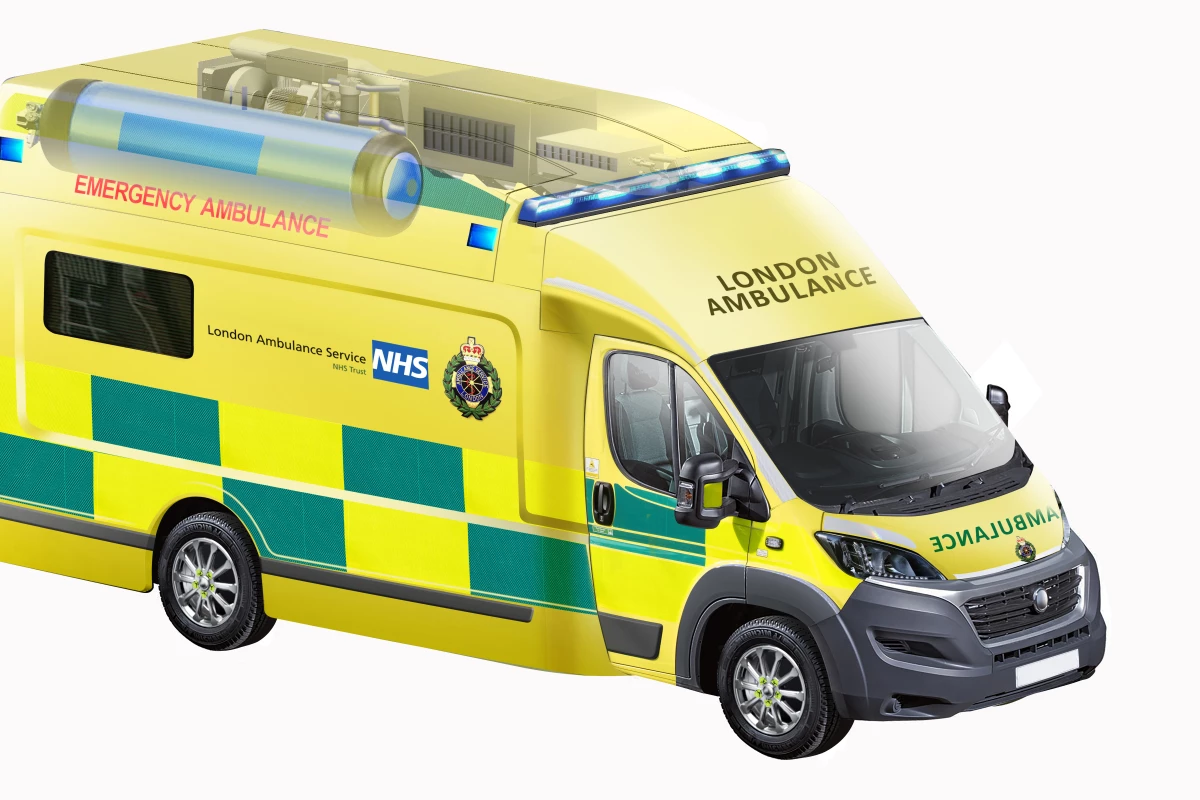Hydrogen commercial vehicle conversion company ULEMCo and industry partners have agreed the design of a new fuel cell rapid response ambulance prototype that's destined to hit the streets of London later this year.
The vehicle is dubbed the ZERRO ambulance, which stands for Zero Emission Rapid Response Operations, and is being funded by the UK's Office for Zero Emission Vehicles – a cross government group working to support the transition to zero (local) emission vehicles.
The electric drive prototype will feature a 92-kWh battery pack and a hydrogen fuel cell range extender comprising a 30-kW fuel cell from Ballard and 8 kg of H2 storage on board. The ambulance is being designed for a top speed of 90 mph (145 km/h) and a targeted average daily range of 200 miles (320 km).
The drivetrain, chassis and bespoke body of the vehicle are being manufactured by Woodall Nicholson Group’s Mellor, Promech Technologies and VCS Limited. VCS has experience in the field, last year producing the UK's first all-electric ambulance in the shape of the Electric Dual Crewed Ambulance that began trials in the West Midlands on October. While Promech will leverage its existing battery technology and expertise. Other project partners Ocado and Lyra Electronics bring the former's practical experience in using electric vehicles and the latter's specialist DC-DC electronics capabilities to the design.
The new ZERRO vehicle will have the ability to haul a payload of at least 900 kg and benefit from a low access floor to negate the need for patient lifting equipment to be included.
"The aim of the project is to show that this weight target can be met with the combination of this powertrain configuration and the lightweight structure, and using a low floor design rather than needing to include heavy lifting equipment, alongside work to integrate the internal electrical power needs within overall vehicle electrical system design," said ULEMCo.
After a year spent working on the design phase of the project, ULEMCo and partners now plan to build and deliver the fully approved working prototype to the London Ambulance Service NHS Trust by the (northern) fall of 2021.
Source: ULEMCo




